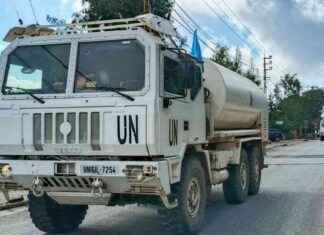The research norway blame Navantia the sinking of the frigate KNM Helge Ingstad (F-313) after colliding with an oil tanker last November 8. The Commission of Investigation of Accidents of Transportation says it has detected a fault is “critical” in the design of the vessel, delivered by the Spanish shipyard in 2009. Navantia, for its part, claims that he has not received official notice of the report, nor has been able to participate in the research. Military experts and naval question in the Norwegian version, and stress that the accident was due to negligence.
The preliminary report of the commission ensures that the failure would be related to the “tightness” of the Helge Ingstad and could be repeated in the five frigates built in the first decade of this century by Navantia for the Navy to norway for about 1,050 million euros. The commission argues that the ruling “is not in accordance with the standard of stability against damages required” and assumes that “this also affects the other four frigates of the class Nansen”, amounting to 5,300 tons and 143 meters in length.
The sealing of the compartments ensures that, in case of opening a channel of water, this not flood the rest of the ship, causing them to collapse. According to an annex to the preliminary report, the flood affected three compartments (the fourth of generators aft, the cabins of the crew on deck and the stores). Initially, the crew thought that the ship might stay afloat, but to warn that the water was falling from the fourth generator to the gear by the shaft of the propellers, and that this would flood quickly, he opted for evacuation.
MORE INFORMATION
A frigate norway collapses after returning from the military exercises of NATO corvettes for Saudi Arabia and will start to build in January, Defence will expand the muellles of Cartagena because it doesn’t fit the new submarine
“it Was discovered that the water was coming in through the shaft into another room. Were not airtight,” he said at a press conference, Kristian Haugnes, a member of the commission, who admitted that the research is still in a preliminary stage and that “circumstances could be the subject of further inquiries”.
the More cautious they showed the chief of the Navy norway, the admiral Nils Andreas Stensones, who considered it “premature” to draw conclusions about the causes of the loss.
The accident, the injured minor eight of the 136 crew members of the frigate, occurred in the early Anadolucasino morning of last day 8, on the west coast of Norway, north of the city of Bergen, where the vessel was returning to its base after participating in exercise Trident Juncture NATO. Although the circumstances of the accident have not been clarified, the sources consulted by THE COUNTRY explained that the frigate and the tanker, who were found face-up in the interior of the fjord, exchanged messages before colliding. The captain of the tanker told the frigate that went down to the starboard (right), but this was denied alleging that the proximity of the coastline (900 meters). The two ships maintained their heading without change and, at the last moment, the frigate fell to the port side (left), precipitating the crash.
The frigate, in addition, was going at high speed (17.5 knots) and the AIS (Automatic Identification System) turned off, despite navigating in restricted waters. It is, according to the sources consulted, of serious negligence in the manoeuvre of the ship. The frigate sank a week after the collision, failing all attempts to keep it afloat.
The announcement of the commission of inquiry was received with astonishment by Navantia. “We do not have official communication of the report, have not been directed to us to see the possible causes, nor have we participated in any of the performances,” explained a spokesman.
“Navantia offered from the beginning to collaborate with the Navy to norway in any thing that was required. We will analyze the circumstances and the assumptions that have been made public”, he added. In any case, according to shipyard public, “the design complies with all certifications and satisfy the conditions of tightness are applicable to military vessels”.
Experts in claims naval expressed his surprise at the fact that the commission has reached these conclusions before you re-launch the vessel and without the advice of the manufacturer. “The shaft was able to move as a result of the collision, which broke the water tightness of the boat, but it would be a problem occurred, not design”, they explain. The violence of the collision was such that he opened two cracks in the hull of the frigate, one of which is around 40 meters, almost a third of the length of the ship, the maximum limit so as not to compromise their buoyancy.
The sealing of the vessel, added to the same experts, should be checked before its delivery, not only by Navantia, but by the inspectors of the own Navy of norway. These frigates have, in addition, a system of closing of hatches to reinforce the seal when they look for areas where there is risk of collision.








